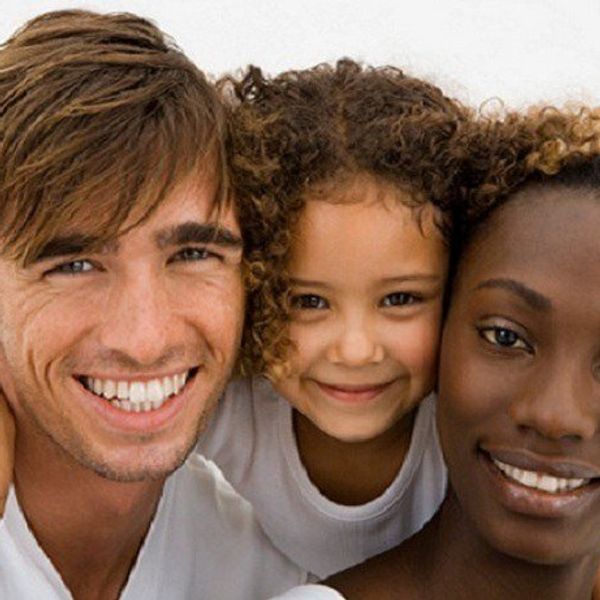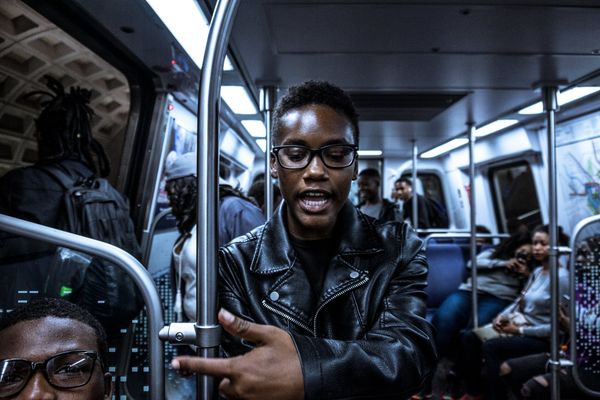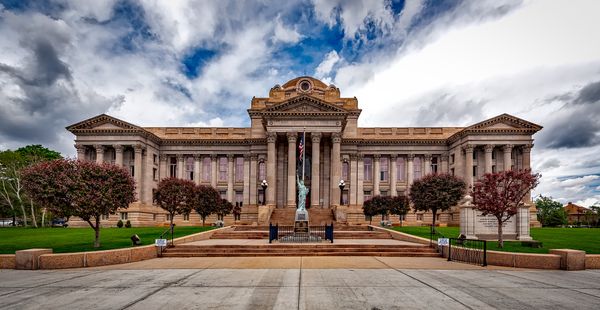So, we need to have a conversation about racial diversity.
Sure, we talk about it endlessly on different platforms in different contexts. People have organized movements. President Obama held a town hall meeting about race relations and police. So we all know the facts. We all know the opinions. We all have had enough conversations from an objective standpoint.
So let’s tell a story.
***
I was born in Guam. It’s a super tiny island in the middle of the Pacific that most people only know about because military or their love for Fredinand Magellan. Even more specifically, I am a Chamorro, a member of the indigenous peoples of the island. On the island, Chamorro people make up about 37 percent of the population, a vast majority compared to Filipino, Caucasian and other Asian/Pacific Islander contingencies. But I’m not here to talk about stats.
I only spent a small sliver of my life on the island, most of which was while I was still getting used to the object permanence thing, so I don’t really remember much about the island. Instead, I spent most of my time not only in the States but also inside, thus explaining my comparatively pale complexion compared to some of my other, more tan or more “islander-looking” relatives. You know the story – you come to the United States, the great melting pot of cultures, and you start picking up on more “American” tendencies. You speak English (the American kind). You celebrate everything American. You pretty much adopt the American mindset in various aspects. And that’s what I did for the majority of my formative years.
But the question always came up whenever I visited a friend’s house and didn’t see a rice cooker in close range, didn’t hear the smooth sounds of KC DeLeon Guerrero pouring through the speakers, didn’t eat food with a side of tatiyas because we had the nearly identical tortillas instead. Why is everything so different? Why am I different? Why am I not normal?
Every person goes through some sort of identity crisis at some point in their lives. Young me, the one who knew of his culture but was not as entrenched in it as some of his closest relatives, had one hell of a crisis that lasted well into emerging adulthood.
Growing up, I tried embracing my culture as much as a tiny child would. I loved it. But I also felt out of place because all my other friends were not Chamorro, thus belonging to an ethnic or racial group that people actually, you know, recognized. I was Jacob, the kid from “Guatemala (nope, it’s Guam).” I had a culture, but not one with holidays we mentioned in school or aspects we learned about in history lessons. Nobody else really made an effort to learn about my culture. So, after a while, I kind of did, too. I just assimilated and let whatever happened, happen. I mean, I didn’t look like an islander anyway, so where’s the harm, right?
***
At my university, all grad students pursuing a Master’s in Behavioral Sciences are required to take a course called Social and Cultural Foundations of Psychology or some other wordy name that used to be Multicultural Psychology. In the class, we learn about different aspects of race, ethnicity, culture, etc., in hopes of gaining better understanding when conducting research or, more typically, providing mental health services.
When talking about minority status as a whole, students come across Atkinson, Morten and Sue’s Racial and Cultural Identity Development Model, which lays out stages one goes through as they develop into their minority identity (there is also Kim’s Asian American Identity Development Model, which falls very similarly in line with the RCID and applies semi-directly to me – but more on that later). If you look at the model in the link, you can clearly see that Grade School Me was in the first stage – Conformity.
***
I went through a lot of my younger years not really paying much mind to the fact that I was, in fact, not white. Chamorro was such an understated part of my identity, such an understood part of my identity, that I really paid it no mind. It was almost like it didn’t exist. As I grew into the extra hormonal identity crisis years, I started to explore a little more about my identity as a Chamorro person. That said, it was tough, considering the dearth of information I had about Guam and its people outside of stories from my older relatives and, until I got a reliable Internet connection, a 1990 edition of World Book Encyclopedia (put in perspective, the Soviet Union was still listed as a current entity).
So here I was, a young individual of minority status about to find himself in his culture when the only sources are individuals who I felt were tough to reach out to in my adolescent angst. Anyone else I talked to just sort of lumped me in the “might as well be Asian” category, which caused an even greater “Am I actually Asian” existential crisis. In short, I had no idea what to do.
***
Now, I’m comfortable in this part of my identity – more so than I have been in my life. I know for a fact I’m not as in touch with my island as I could be, but I work toward that as best I can and proudly wear my Chamorro pride. But it took a few years, some talks with relatives and a renaissance of my cultural identity after mom and grandma went back to Guam last April for the first time in what seemed like ages. It was different, but it was the right kind of different I needed to fully embrace a part of my identity that did not come out nearly often as I would have liked.
***
The whole point of this story wasn’t to give you an overly candid look into my life and one aspect of identity development. It wasn’t to try and stir up ire about racial relations. Honestly, it was barely here to provide a history/culture lesson on Guam. More than anything, the point of the story was to shine a light on racial diversity – and awareness – in a way other than blatantly shouting at someone to be more open or more aware.
I had trouble trying to figure out what was so important about diversity within myself, let alone within a place I was living. I didn’t realize just how important inclusion could be because I was so used to not being included – at least ethnically. I still let out a silent cheer of joy whenever Guam or Chamorro people get mentioned somewhere (unless it’s a bad thing, but that’s another story). Not addressing it made the awareness that much more difficult for me.
What’s more is that, in many cases, Asian is considered a very “might as well be white” racial categorization. It isn’t an intentional thing, but it’s something that has happened over time as more and more individuals of Asian descent are becoming recognized for their accomplishments – so much so that many feel as if Asian individuals are part of the “implied” group that warrants no mention as opposed to the minority groups that “warrant” a separate mention – despite numerous accounts of anti-Asian sentiment in the past. (Note: That is not to discount the oppression other groups have experienced. It’s just that, right now, I’m speaking from a predominantly Pacific Islander and, thus, Asianesque perspective.) What happens in that process, though, runs counterintuitive to the goal of racial equality and awareness.
One of the other things I learned in that Social/Cultural class was that not addressing issues of race – “being colorblind” if you will – just sort of whitewashes everything. Yes, we try to “not see race” out of respect for the equality of everyone of all backgrounds. After all, equality is what we’re after. But we cannot achieve that by setting everyone to default settings (which, in many cases, is from a white perspective). It just leaves those who pass as white having to prove they are not and those who do not pass as white devoid of closeness to their culture. It’s why “assimilation” is one of my least favorite words.
This brings us to the question of how to truly be equal if we keep highlighting our differences. That brings me to another answer I implied from my learning in the Social/Cultural class: Many people need to stop equating “equal” with “being the same” and “different” with “lesser.” Despite what the whole mess in the era between Plessy v Ferguson and Brown v Board showed us in America, we can be different and equal. It seems like a no-brainer, but it somehow does not show up in much of the racial discourse in the country, whether between majority and minority races or even among different minority groups. I guess years upon years of being told otherwise really got to us in America.
One of my favorite quotations from author YouTube creator John Green: “There is no Them. There are only facets of Us.” I’ve analyzed this quotation often. In brief, it takes the “we are the same” argument but adds to it the reminder that we are not a homogenized mass of humanity. It’s inherent in the word “facet,” which literally means one part of something many-sided. We may be “one,” but we are a “one” of many diverse sides that all need recognition, awareness or just some sort of acknowledgment of existence. It’s not reverse racism. It’s not giving someone an upper hand for not being white. It’s not even trying to make people think that your problems are the only problems. It’s about celebrating our many beautiful differences as a human race. It’s about learning how to use fairness to achieve equality (because the two terms are not the same thing). It’s about knowing someone will understand your struggle without trying to overshadow it with their own.
It’s about others recognizing your identity, especially if you struggled to recognize it yourself.




















